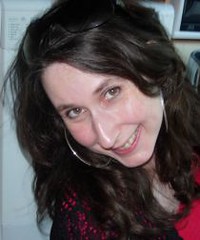 We thought our storage facilities were warm enough to work in, even in the winter. But the current Arctic spell — which is a proof of the simple fact that global warming isn’t evenly distributed around the world — has forced one of our external designers, Mikael Thorsted, to wear winter cloths when inspecting artefacts for our new exhibition:
We thought our storage facilities were warm enough to work in, even in the winter. But the current Arctic spell — which is a proof of the simple fact that global warming isn’t evenly distributed around the world — has forced one of our external designers, Mikael Thorsted, to wear winter cloths when inspecting artefacts for our new exhibition:
 .
.
What is going on? Well, ‘Primary Substances‘ — the first exhibition in our brand new extramural temporary exhibit area in the main building of the Faculty of Health Sciences — is closing tomorrow. It will be followed by ‘Healthy Aging’, which approaches the major global challenge of ageing (sic!, see disclaimer below) in three different ways — through science, art, and cultural history:
Through science: Studies of the process of aging is a rapidly growing international research field. How can the biological and social sciences and the humanities help us experience a more healthy old age? In a series of wall panels we are presenting the new multidisciplinary Center for Healthy Aging, University of Copenhagen, established in 2009 by means of a grant from the Nordea Foundation.
Through art: Science is not very good at capturing the existential dimension of aging or visualizing the accumulated layers of life experience. But that’s something that art can do. Acclaimed photographer Liv Carlé Mortensen has created a photo and interview collage series of portraits of Danish centennarians, called ‘100 Light Years’ (we are displaying the series of commissioned photo collages that Liv made for our intramural ‘Oldetopia’ exhibition two years ago).
Through cultural history: Finally, aging has its own visual and material cultural symbols. Two showcases in the lounge area are going to display historical objects from our rich historical collections that represent four kinds of aids that have been associated with old age — artefacts that have helped us overcome the deterioration of bodily functions.
The show is produced by myself together with Bente Vinge Pedersen, Jonas Bejer Paludan, Ion Meyer and Nanna Gerdes from Medical Museion. Design and graphics is taken care of by Mikael and Lars Møller Nielsen, Studio 8, Copenhagen.
We are also working closely together with Tina Gottlieb, administrative head of the Center for Healthy Aging, and the team leaders of the Center’s five research programmes, who have contributed text proposals and images for the wall panels. But lots of editing and re-writing, because few academic scholars really understand how little text you can actually display on a 125×85 cm wall panel 🙂
‘Healthy Ageing’ is scheduled to open on Monday, 8 February. More about it later.
(Disclaimer: for purely irrational reasons, I don’t like the American spelling of ‘aging’, but prefer Br. Eng. ‘ageing’. However, the Center for Healthy Aging, which pays for the show, has adopted the American spelling practice, so we courteously adjust to this fact to avoid a bi-lingual show.)

 We are also lucky to have recruited a new postdoctoral fellow —
We are also lucky to have recruited a new postdoctoral fellow —  We thought our storage facilities were warm enough to work in, even in the winter. But the current Arctic spell — which is a proof of the simple fact that global warming isn’t evenly distributed around the world — has forced one of our external designers, Mikael Thorsted, to wear winter cloths when inspecting artefacts for our new exhibition:
We thought our storage facilities were warm enough to work in, even in the winter. But the current Arctic spell — which is a proof of the simple fact that global warming isn’t evenly distributed around the world — has forced one of our external designers, Mikael Thorsted, to wear winter cloths when inspecting artefacts for our new exhibition: .
.